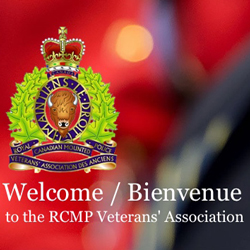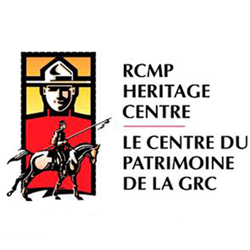Barry Bradley’s Old Newspaper Clippings
Throughout his career in the Force (1960 – 1995), Veteran Barry Bradley developed a newspaper scrapebook containing notable news stories about the RCMP in the Lower Mainland of British Columbia.
Each week, we will post three or four of these old newspaper clippings for the interest of Veterans and their families. This week’s webpage includes some interesting stories reflecting different aspects of activities in the RCMP. These stories would have been forgotten if not saved by Barry and to be shared with others.
On The Public Investigation Into Justice In Vanderhoof
December 8, 1976 (Vancouver Sun newspaper) – Vanderhoof detachment (of the Royal Canadian Mounted Police) is comprised of nine regular members and one civilian employee. The average length of police service for members is just over seven years. The rank structure of the detachment is one sergeant, one corporal and seven constables.
It is important to realize that prior to Sept. 1, the detachment had seven members, five for general duties and two traffic members.
When considering police population rations, we take the view that only general duty members should be included. When looking at basic police service, we look at members who are deployable to respond to calls from citizens and when not responding to complaints are engaged in crime prevention strategies.
Therefore, prior to Sept. 1, there were five general duty police persons to deal with crime and crime prevention in Vanderhoof.
The police population ratio was /1,400 until Sept 1, when two additional general duty members were added to give a police population ratio of 1/1,000 which is a minimum standard.
This is based on a population estimate of 7,000 living within the Vanderhoof detachment boundaries: approximately 3,000 in the Village of Vanderhoof and 4,000 in the rural area living on farms and a small acreage lots.
The total detachment area is rough terms is 4,000 square miles with 70 miles of arterial highway.
Seventy-five percent of calls for police service originate in the Village of Vanderhoof. Based on population figures, people living in Vanderhoof proper receive a disproportionate amount of the police service.
Although only 25 per cent of the calls originate in the rural area, because of travelling time and road conditions during the winter months, each call averages appropriately two hours.
Statistics indicate an increasing workload for both the general duty and traffic members of Vanderhoof.
The detachment had the second largest criminal caseload per man of the 18 detachment in the Prince George subdivision for all of 1975.
In the first half of 1976, Vanderhoof detachment dealt with more criminal cases per man than any other detachment in Prince George subdivision.
The detachment estimates that 90 per cent of prisoners were arrested for intoxication and the great majority of those arrested were native Indians. It might be appropriate to mention that liquor sales in the Vanderhoof area totaled $861,902 for the period April 1975 to April 1976.
Overtime hours for Vanderhoof detachment reported for 197 are as follows: January, 71; February 88.5; March 86.5; April 306; May 161; June 201; July 193.5; August 286.5; September 451.
These hours do not include voluntary overtime which the police estimate to be equal to the hours reported.
The sergeant in charge of Vanderhoof is required to spend more of his time dealing with the administration of the detachment.
The public is not aware of the necessity for accurate police reports and the amount of paper work involved in day to day policing and court cases. Additionally, it is not appreciated by many citizens that it requires five police members to maintain one member on duty 24 hours a day, seven days a week.
The problem of paper flow and deployment of manpower are two of the major functions of the detachment commander.
There are monthly detachment meetings where participative management by all members is encouraged which results in constructive ideas and suggestions. There is good comradeship within the detachment.
There are no sheriff’s officers in Vanderhoof at the present time; however, the justice council is bringing this to the attention of the attorney-general. The role of the sheriffs is to escort prisoners, provide court security and serve court documents. The presence of one or two sheriff’s officers would greatly assist Vanderhoof.
A citizen patrol was started on July 1 by the chamber of commerce with the full cooperation of the police.
Since its inception there has been a decrease in vandalism and on one occasion a break and entering was solved. Perhaps more important, it has helped to build a good relationship between the police and the members of the community.
Vanderhoof detachment maintains a school program with talks to elementary school classes and law classes at the high school level. They have been involved in fraud and business security seminars. Most members are involved with coaching or supervising minor hockey or baseball.
The detachment has started planning for a neighborhood watch program which has as its objective reducing breaking, entering and thefts.
It is clear that Vanderhoof detachment carried a heavy workload during 1975 and the full half of 1976. The workload was studied by Prince George subdivision staff and an increase of two members was recommended.
The officer commanding Prince George subdivision is to be complimented for quickly responding to a need for additional police strength.
The detachment’s clearance rate of 45 per cent to 47 per cent is well above the provincial average which is around 30 per cent. Therefore, Vanderhoof detachment members can take pride in being both busy and successful in dealing with reported crime.
‘A Police Visit Only Means Trouble’

Photograph of a RCMP member informing school children about the Canadian justice system (Source of photo – RCMP Veterans’ Association – Vancouver Division’s Photo Collection).
December 8, 1976 (Vancouver Sun newspaper) – Members of the B.C. Police Commission spent hours at the Stoney Creek Reserve listening to the problems of native people. We spent equal time listening to the views of citizens from Vanderhoof and the police.
The difference between the views of the natives and the police is a matter of perception.
We heard complaints from native people about such matters as:
– The police never visit the reserve unless they are responding to a specific complaint.
– Native people feel some police members were kind and considerate while others did not seem to understand the Indian culture.
– On a number of occasions the police were called but did not attend complaints of if they did attend they did not inform the complainant of the results.
– It is the view of several native people that the police should immediately arrest all natives found in a state of intoxication for the good and protection of the native person.
– Native people held the general view that the police gave better service to the non-Indian community.
– Stoney Creek residents specifically mentioned a number of offences where they believe the charge was dropped or not processed through the courts.
– Generally native people felt a need for better communication with the police;
The police view of the concerns listed above is as follows:
– The police on occasion patrol the reserve. However, it would not be apparent to the majority of people whether it was a routine visit or a patrol to deal with a specific complaint. The police felt they did not have the time and resources to patrol Stoney Creek as often as would be ideal.
– None of the members we spoke to felt any bias or ill-will toward natives but the police did express some frustration dealing with native social problems. The police feel they have a reasonably good knowledge of the Indian culture and agreed that greater knowledge would be helpful.
– The police say they respond to every complaint. On occasion the member on duty may be some distance from Stoney Creek, and the lack of rapid response may be interpreted as lack of interest. The police feel some frustration with native people who make complaints to the police but do not follow up the complaint or cannot be found for a week or two after registering the complaint. In many cases native people are reluctant to attend court and give evidence against persons who have harmed them.
– The police find no pleasure arresting intoxicated persons. If in the police judgment the person is not a hazard to himself they tend to be lenient. The number of arrested for intoxication is very high for a community of 2,700 – 3,000 people.
– The police perception is they give equal service to all citizens. In fact the people from Stoney Creek require and receive more police service than is typical of the non-Indian community.
– In all cases where native people felt charges were not proceeded with, it was established that the charges were before the courts with trial dates set. This is an example of long delays in court being misconstrued as lack of action by the police.
– The general concern about lack of communication is a clear example of the different perception. The police view their relationship with Stoney Creek residents as reasonably friendly. They were surprised that communication was perceived as a problem.
Optimism – If The Community Takes Responsibility To Heal Itself
December 8, 1976 (Vancouver Sun newspaper) – The police plan to take the following steps to help correct some of the problems faced in Vanderhoof and Stoney Creek.
The police agree to the need for regular meetings with the mayor and village council of Vanderhoof.
The police will arrange for regular meetings with the chief and band council at Stoney Creek Reserve. There will be informal meetings with the Stoney Creek band manager. The police welcome the opportunity to meet with the Indian Homemakers as often as is thought necessary.
There will be continued involvement with the Vanderhoof justice council.
The police will ensure stepped-up enforcement concerning liquor act infractions, rowdyism and drunkenness in the streets and traffic infractions.
The police will attempt to expedite court cases to the extent possible within their means.
The sergeant in charge of Vanderhoof detachment will set up a personal advisory committee made up of local citizens to enhance a system of feedback from a cross-section of the community. Such as system will quickly provide the detachment commander with knowledge of concerns about policing and avoid the possibility of losing contact with any segment of the community.
The B.C. Police Commission members take the view there is reason to be optimistic about the future of policing in Vanderhoof. The six proposals from the police have considerable merit and are worthy of comment.
It is essential that the police and elected officials build an easy and pleasant mechanism to ensure good communication. There is a responsibility on the part of the mayor and aldermen to help the police develop a productive role in the community and prevent any feeling of isolation on the part of the police.
We were impressed with the band council which is youthful and progressive. The band manager expressed an interest in closer co-operation with the police.
Members of the Indian Homemakers group possessed quiet dignity and were persuasive in their requests for greater understanding from the police.
We have strong views that native people can best solve their own problems. In this regard, we feel the police should respond favorably and quickly to any suggestions or calls for assistance from the native people.
There were a number of non-Indian people who no doubt had good intentions but tended to exaggerate or distort the true situation as to relations between native and police.
The Vanderhoof justice council, in addition to dealing with some specific suggestions from the coroner’s jury (inquiring into the death of Coreen Thomas) is best suited to look at the matter of racism in the community. We had the opportunity to attend one justice council meeting and we were impressed with their knowledge and desire to help the community.
Concern was expressed by all segments of the community about the problems of rowdyism, drunkenness and hazardous driving offences.
It is clear from our visit that alcohol abuse is the number one issue in Vanderhoof.
It is also clear that measures needed to cope with the problem require the combined effort of government agencies, non-government agencies, local agencies and individuals from the various segments of the community. The community expectation seems to be that the police alone are responsible for dealing with the awesome task of combating alcohol abuse.
We agree that the police will find it necessary to arrest intoxicated persons for their own safety and the safety of others, but it is not satisfactory long-term solution.
As a leading member of a province-wide Indian organization pointed out to the commission: “If a police officer arrests an intoxicated Indian where a scuffle ensues, two negative stereotype are reinforced: that all Indians people are drunks and lazy, and that police officers are brutal in the handling of Indian people.”
In order to avoid this it is necessary to explore the possibility of finding more satisfactory ways of dealing with intoxicated people.
Among the measures that have been tried successfully in B.C. are detoxification centers and programs. Another alternative is an Indian patrol which works in co-operation with the police in picking up Indian people who are exposed to danger due to being intoxicated and taking them home in appropriate cases.
The need for justice to appear fair and swift is critical to effective policing,. The resident prosecutor will be a great help dealing with this problem.
Police mangers must constantly be alert to community concerns. This is a constant problem of losing touch with one or two segments of the community. For this reason we were very pleased with the detachment commander sitting up a system for communication with the whole community.
Throughout the province of B.C. we are seeing better police service where detachments build and maintain a very close relationship with the community. We are going to see a growing acceptance by communities that social and economic ills are indeed community problems and to hold the police accountable for the level of crime is totally illogical.
The police can do much to prevent crime and maintain peace and security but only when they have the community as an ally.
The major recommendation from B.C. Police Commission is that the problem of alcohol abuse be dealt with by the Vanderhoof and Stoney Creek communities working in conjunction with the police and the Vanderhoof justice council. The B.C. Police Commission commits itself to assisting the community wherever possible.


 November 19, 2014
November 19, 2014 









